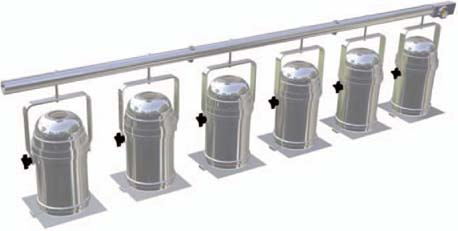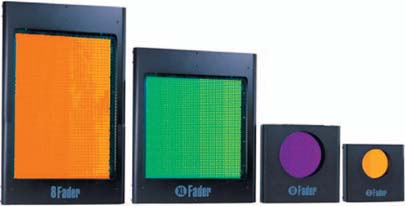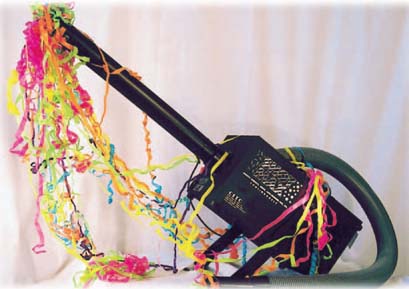18
CONVENTIONAL LIGHTING AND ACCESSORIES
From the earliest days of rock & roll touring, conventional the-atrical lighting luminaires were a problem. It was not that they could not, from a design standpoint, do the job of giving a theatrical look to the stage, but they were not designed to take the kind of punishment of being loading in and out on a daily basis and trucked to another location all within 24 hours. Yes, theatre bus and truck companies predate the concert era, but they were traveling with the luminaires boxed up in crates and reconnected to a house pipe and circuited at each new theatre, often with weeks between moves. For this new type of touring, though, you could count on broken lenses, handles falling off, and lamps loose or off their bases when you opened the crate. Constant rewiring of individual cable connectors was also necessary. Also, the Fresnel and older plano-convex spot luminaires just did not have the lumen output needed to project heavily saturated color; however, they, along with the Leko (ERS), did offer creative alternatives to the simple blast of color from the PAR luminaire, so what was a designer to do? [Author's note: The term Leko is appropriate here because this was before the modern ellipsoidal reflector spotlight (ERS) was invented.]
THE PAR FAMILY
Chip Monck, it is generally agreed, brought the PAR-64 lamp to the concert field. He said he “stole” two from Four Star Lighting in Los Angeles, which was a big film rental house in those days. He took them to Altman Lighting's factory in Yonkers, New York, where he and Ronnie Altman could see that they would not hold color so close to the “bottle.” The first run of 1000 units of their new design added 6 inches to keep the color farther away from the lens. Of these, 500 were purchased by Bill McManus in Philadelphia, the remainder by Bob See at See Factor Industry in New York. Still, Bill said, “Halfway through the show, the color was burnt out by the great heat generated so close to the lamp.”
Sometime before the first real rock & roll benefit show in 1971 (the Concert for Bangladesh), Chip was walking through the Altman Lighting factory with the founder, Charlie Altman, when he spied a pile of 8-inch snoots (extension holders that can be added to the housing) that had been made for the company's 8-inchelli psoidals. He thought that adding this additional 6 inches of distance to the already incorporated 6 inches would be much better for the color. He remembers Charlie walking away mumbling something about “that fucking hippie.” He continued to re-gel every night on tour but admits that the intensity of the saturated color could have held for three shows. Eventually, color media were reformulated and soon after were able to handle the heat for longer and longer times, with some exceptions.
The original use for the PAR-64 family of luminaires was for film lighting in a unit they called the Cine Queen. Chip's innovation was to put vibrant primary colored gels in front of the Cine Queen. The housing was simple, no moving parts, and it had a gel frame holder farther away from the lamp than did the Cine Queen which helped with some of the color burnout issues, but not completely. Bill McManus said, “There were no porcelain caps back then, and the wiring left a lot to be desired.” But it worked. He

FIGURE 18.1 PAR luminaire family. (Photograph by James Thomas Engineering.)
used the 500 units that Altman built for him on Jethro Tull's Passion Play tour in late 1971. What he didn't know at the time was that Altman had also run 500 more of the design and sold most of them to Bob See at See Factor, another early concert equipment supplier. “I was so impressed that Chip Monck had picked a bottle that had so much punch over anything on the market, but it just wouldn't hold color,” Bill told me. On that Jethro Tull tour, people went nuts. “We had 250 of the new PAR cans in a box beam truss supported with inverted CM chain hoists. It was the first tour to fly the whole system. The [Rolling] Stones had used Gallaway rams from the floor as support,” Bill went on to verify Chip Monck's earlier remarks.
To be sure, the answer to many of the problems of shear lighting punch and road-ability was found in the parabolic aluminized reflector (PAR) lamp and housing. The details of how the PAR came into use for touring have already been well documented in Chapter 5. The PAR lamp had the highest lumen-per-watt rating of any lamp then developed, in the 3200 Kelvin range. Heaven had arrived for the concert designer. In a media where bravado was a key element in design, the PAR-64 promised a low initial purchase price and long road life.
This sealed-beam lamp family offers a range of beam spreads from very narrow to narrow to medium to wide flood. The aircraft landing light (ACL) can also be fitted into the standard PAR-64 housing. It produces a very, very intense narrow beam of light. The drawback is that it is a 24-volt lamp. Four can be ganged in series so U.S. 120-volt dimmers can handle them; however, if one goes out you lose the entire group. You also give up some individual control. Yes, ACLs really are for aircraft. I remember an aircraft supply company calling us and asking how big a fleet of aircraft we had because we ordered so many lamps we had completely depleted their stock. And, yes, I know that 4 lamps at 24 volts only adds up to 96 volts. Remember that the voltage at the house disconnect can be anywhere from 110 to 120 volts but generally is well below 120 volts. Add the dimmers, which will reduce the power by at least 2 to 3 volts, and a 100-foot multi-cable to the lamp itself, and the over-voltage factor is expectable. In fact, it has the advantage of making the lamp burn brighter, admittedly also reducing the lamp life, but that is a small price to pay.
The PAR luminaire family (PAR-56, -46, -38, -36, -30, -20, and -16) also has housings for smaller lamps and reduced wattages in both black baked enamel and silver (Figure 18.1). These luminaires may not have any effect if they are housed in a truss 24 feet in the air, but they are useful for lighting objects up close, hiding in stage sets and small coves, or even exposed as a practical part of a set piece. Very common is the six-lamp PAR bar, which has six PAR lamps attached to a pipe with hangers and is prewired to a Socapex connector (Figure 18.2).
The Raylight (Figure 18.3) combines a reflector and lamp—the DYS lamp, which is a small, 600-watt mini-pin base lamp—that fit in the standard PAR-64 housing. It throws a very concentrated beam, very similar to the ACL, but operates on 120 volts. A 30-volt version of the lamp operates at 250 watts. Reflectors are also made for the PAR-56 and PAR-36, as well. The PAR is now a staple in theatre and television.
ETC's PAR and PAR nel
Comparable to the size of a short-nose PAR-64, the Electronic Theatre Controls (ETC) Source Four PAR

FIGURE 18.3 Ray light reflector fits in the standard PAR-64 housing with a DYS lamp. (Photograph by Creative Stage Lighting Co., Inc.)
(Figure 18.4) started the trend of improved optics and a smaller luminaire that would complete with the PAR-64 in brightness and user convenience. Made of die-cast aluminum, these luminaires use the 575-watt High Performance Lamp (HPL), a real energy saver that, compared to the 1000-watt PAR-64, has a quality of light that is not distinguishably different. The unit is also rated for a 750-watt HPL lamp. Another unique feature is that the one housing has an interchangeable set of four snap-in lenses that alter the beam characteristics from very narrow to wide angle. Also, the football-shaped beam is rotated via a front ring that adjusts the beam just like the regular PAR-64.
The PAR nel (Figure 18.5) is another style of Source Four luminaire. It is a mix between a PAR and a Fresnel that allows adjustment of the spot to the flood setting simply by rotating a manual knob on the

FIGURE 18.4 ETC Source Four PAR.( Photograph by Electronic Theatre Controls, Inc.)
luminaire to achieve the desired spread. Accessories include barndoors for extra light control. Altman's Star Par is a similar product, as is American DJ's version. These types of PARs are widely used as a conventional concert lighting rig and to augment moving luminaires, often replacing the PAR-64 al together. They have gained wide use in theatre and television as well as for other vestal applications.
FRESNEL
The Fresnel is one of the workhorses of the theatre. Named for the inventor of the lens, Augustin-Jean
Fresnel, it is designed for soft-edge applications. It can be used for lighting acting areas as well as set and backlight applications. The size range is great, but for most theatre use the 6-inch version is most common. (The inches are an indication of the unit's physical width of the lens.) The 6-inch Fresnel can be lamped for 250 to 500 watts, and more robust units can handle 750- to 1000-watt lamps (Figure 18.6). The 1500- to 2000-watt 8-inch Fresnel is not in favor due to its size and weight. For video and film use, the sizes go up to 10- and 24-inch units. Their application may be limited in touring, but they do find special application from time to time.
ELLIPSOIDAL REFLECTOR SPOTLIGHT
The ellipsoidal reflector spotlight (ERS) is one luminaire that has more names than you can count on one hand: Leko, ERS, profile spot, ellipsoidal (okay, I only have four fingers). Leko is a name that has been seen on light plots and in contract riders for many years, often misspelled “liko” or “leco.” Leko is a contraction of the names of the two men credited
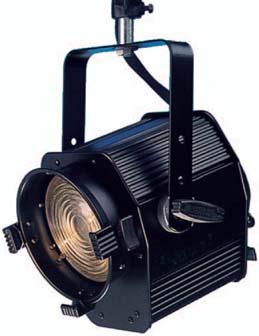
FIGURE 18.6 Fresnelite®. (Photograph by Strand Lighting.)
with introducing the ellipsoidal reflector spotlight: Ed Levy and Edward Kook. It is the registered trademark for the luminaire developed (circa 1932) by the old Century Lighting Company, now Strand Lighting, a company within the Philips Group. This old Leko design included two plano-convex lenses placed back to back to create parallel beams of light. The convex side of the lens was made to focus at a specific distance. To find the focal length of the lens, you could take one out of the housing and do the old magnifying glass trick for finding the focal length by moving it closer and farther away from a surface. This lens combination provided a focus of 6, 9, or 12 inches, or narrower. Those measurements would then be translated into degrees of light spread (Figure 18.7).
A unique feature of this luminaire is that it has four framing shutters that allow you to shape the light as a circle or a square or many other geometrical shapes. The light output can be hard edged or softened. It is easiest to think of this light as the single-lens reflex (SLR) camera of theatrical lighting. The shape of the reflector and the compactness of the lamp filament allow the light beams to converge
at a point called the focal point or gate, which is where, like a SLR camera, the image is turned upside down and backwards. So, a gobo pattern is placed backwards and upside down if the designer wants the image to appear as viewed directly. Other accessories can be placed at the gate such as an iris.
The Leko went through a radical redesign by ETC in 1992, when it was named the Source Four (Figure 18.8), and this version was followed by others with their own improvements. The luminaire is now commonly referred to as an ERS. It is used on tours to project patterns, and its many accessories include the Twin Spin (two patterns rotate counter to each other), color changers, and other toys. The ETC models started the trend to change how luminaires are designated, from inches to degrees, which provide a more accurate way for a designer to visualize how wide a beam will be simply by using a protractor to draw lines equal to the beam spread of the unit. ETC also divided the lens into more categories and has since expanded the choices even more: 5, 10, 19, 26, 36, 50, 80, and 90-degree lenses. Most other

FIGURE 18.8 Source Four ERS.(Photograph by Electronic Theatre Controls, Inc.)

FIGURE 18.9 Profile Spot. (Photograph by Selecon.)
manufacturers also offer most or all of these lenses. Several zoom versions of the ERS are available.
Originating in England, but now also available in the United States, the Profile Spot (Figure 18.9), with its distinct silhouette, offers essentially the same functions but with a radical design difference in how the lamp is accessed. These units are designed to
make relamping easier via the bottom, not the back. Any ERS or Profile Spot can also find good use during filming of a tour as a “key” light on the band members and singers to cuelluminate cutaway shots the director wants (see Chapter 27).
CYCLIGHT AND FARCYC
Concerts have generally adopted one television luminaire, the Cyclight, which is widely used for lighting backdrops. The design of the reflector, a sheeting configuration, allows the unit to be placed close to a backdrop and light vertically up the surface for 10 to 14 feet (depending on model and distance). Their light output, if not their size, has made them a favorite; they take up a lot of room and do take time to set up, but the advantages outweigh many of their shortcomings. Several versions of Cyclights are made. For floor mounting, a series of 4 to 12 lamps in 3 to 4 circuits can be used (Figure 18.10). Overhead mounting favors the Farcyc, which is a square of four lamps and was first used at the BBC Studios in London. Currently, the trend is to use an MR16 lamp version or LED strips (Figure 18.11), which are sometimes smaller but can also be heavier. MR16 strips can also be seen at the front of many stages as uplight to fill
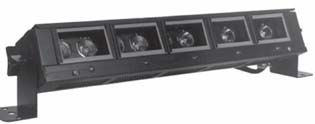
FIGURE 18.11 MR16 striplight.(Photograph by Lighting & Electronics, Inc.)
in chin shadows, particularly those of female performers or cowboys with hats.
THE NEW BEAM PROJECTORS
Beam projectors are a reinvention of an old standby. The beam projector is an open-face, lens-less unit whose purpose is to project parallel beams of intense light. The old units were not very efficient, but the latest generation has vastly improved on the design and light output (Figure 18.12). Another company, PANI Projection and Lighting, refers to their units as parabolic spotlights, but they are essentially the same; however, instead of an 800-watt, 120-volt lamp, they use low-voltage 250- and 500-watt lamps.
AUDIENCE BLINDERS
Not quite the slang name or use the manufacturers intended, but this is what audience blinders are generally used for—to illuminate or literally blind the audience. They are various configurations of the PAR-64, PAR-36, or MR16 grouped in 9 to 24 lamps. They found their way to touring via film (Figure 18.13), where they were called fay lights, because the PAR-36 had an ANSI three-letter code of FAY. An extremely unique take on the audience light is the Litepod (Figure 18.14), manufactured by Wybron, Inc., which surrounds a strobe in the middle with groups of lamps. The original idea for the Litepod came from Doug Brant and Justin Collie of Artfag LLC. The light alternates between a DWE 9-light luminaire, a 6-light luminaire with a single
Martin Atomic 3000 strobe, or a double Atomic 3000 strobe luminaire and can be fitted with a large-format CXI for unlimited color options.
See Figure 18.15 for a list of conventional luminaire manufacturers.
FOLLOW SPOTS
Truss-mounted follow spots are a common device for providing concentrated light on a moving subject. Coupled with a mounting bracket and chair with a safety belt (the operators also wear fall protection equipment), the follow spot can be placed anywhere on the truss rig but usually in the rear. The smaller

FIGURE 18.13 Audience blinder. (Photograph by James Thomas Engineering.)

FIGURE 18.14 Litepod. (Photograph by Wybron, Inc.)
HMI units are most popular. Most use a 400-watt HTI lamp (metal halide short-arc lamp) in such models as the i-marc series (Figure 18.16), which uses 200- and 850-watt sources. Lycian's Super Arc 400 (Figure 18.17) uses the HTI-400-24 lamp. These units are only about 30 inches long and put out better than 300 fc at the normal throw from the truss—a very hot source that is very effective in concert lighting design. The HMI and HTI sources are 5600 Kelvin, so adjust your color media to account for the bluer light.
Front-of-house (FOH) follow spots have always been the weak link in a touring design because most productions are at the mercy of the units already positioned in the venue: their positions, type, wattage, age, and how well they have been maintained. Many of the high-end productions do carry their own FOH follow spots so that they are assured of balanced intensity and color. These productions may also place the follow spots on specially built and flown platforms so they also control distance to the stage.
There are several remote-controlled follow spot units on the market. These were designed to remove people from the trusses, and certainly this is a safety advantage. Wybron, Inc., has had their Autopilot series on the market for several years. These lights locate the subject in three-dimensional space, translate the position to pan and tilt for any number of moving luminaires, and follow the performer.
DMX IRIS
You can buy mechanical irises and place them in an ERS luminaire to get the precise circle desired, but they tend to slip. A remote-controlled iris can solve

FIGURE 18.17 The Super Arc 400. (Photograph by Lycian Stage Lighting.)

FIGURE 18.18 Follow spot manufacturers.
the problem and also give you another way to change the size of the image at different times in the show without using a moving luminaire.
SHUTTER
There is that occasion when you absolutely have to use an HMI source but you also need to turn it on and off on cue. Consider a remote-controlled shutter. Phoebus Manufacturing has been making all sizes to match just about any luminaire you can name for years. Phoebus shutters (Figure 18.19) are DMX controlled for a smooth fade or quick blackout and can be powered with 120 or 240 volts.
FAT LIGHTS
Here is one of those new terms. Fat light has come to mean an extremely powerful light source that produces a beam that cuts through anything, even the largest follow spots. In years past, some of these would be called search lights, as homage to the old movie premier lights stabbing bright beams into the night sky. Ofcourse, these are now more likely to be an attraction at a discount furniture store. Fat lights can certainly do that, but at a much reduced footprint and with a non-carbon-arc light source.
One of this new group of high-power moving luminaires is the Morpheus Lights' Brite Burst 2000E (Figure 18.20). This is a 1200-watt HMI source with a 15-inch-diameter aperture that uses the company's

FIGURE 18.19 DMX-controlled shutter. (Photograph by Phoebus Manufacturing.)
Color Fader3 color mixing system. I know of one designer who calls this the best “fat beam” available. There are many single heads (Figure 18.21), such as the Synchrolite MX-3000D, a 2000-watt xenon source, that all rotate or move in preprogrammed patterns. Skytracker has been a leader in this field for years; they are now part of the Strong International family. Figure 18.22 shows one of the most recognizable multiple-head units used for festivals and business openings along with concert use. The Skytracker series products are not designed for attachment to a flown truss. Strong is best known for their long throw follow spots. Most of these units use 2000- to 10,000-watt xenon lamps. Synchrolite has some units that can be attached to the truss and provide more features than simple rotation, as does Novalight from Omni Sistem. New contenders are two units called the Big Lite and the Little Big (Figure 18.23) by ZAP Technology.

FIGURE 18.20 Brite Burst 2000E. (Photograph by Morpheus Lights.)

FIGURE 18.22 Skytracker STX4. (Photograph by Strong International Lighting.)
They are an unusual shape employing a single-arm design, and they provide CYvM color. Also placed in this category could be PRG's Bad Boy, High End's SHOWGUN 2.5 and SHOWPIX, Vari*Lite's VL3500, and a new entry, the Falcon Search Light.
See Figure 18.24 for a list of fat light and search light manufacturers.

FIGURE 18.23 Little Big Lite. (Photograph by ZAP Technologies.)
COLOR SCROLLERS AND CHANGERS
Being able to create multiple colors from one luminaire is a very important part of moving luminaires. Showco, beginning with its first Vari* Lite luminaires, led the field in this area. Their approach was radically different from the old color wheel. Instead of the boomerang-type color changer, they used two dichroic prisms arranged to rotate inside to produce a palette of some 60 usatble colors. This capability has been expanded by Vari* Lite to, in their words, produce any color in the visible spectrum. Other internal methods for changing color have appeared. Some use two wheels with one having at least the primary colors (red, green, and blue) and a clear open space and another with atleast the secondary colors and clear. This method is known as additive color mixing or RGB. CYM stands for the colors of cyan, yellow, and magenda and is the subtractive color mixing system many moving luminaires use to create color from “white” light.

FIGURE 18.25 Color Ram IT. (Photograph by Wybron, Inc.)
Most color string color changers come in one of two forms. First, there is the scroller that allows the designer to request a string of colors from any media manufacturer to fill from 12 to 32 positions (leave one clear, of course) (Figure 18.25). The second is where dual premade color strings are designed to give the hue and saturation of the full spectrum by working in opposition to each other; however, this requires two control channels. At least two companies provide this type of unit. Morpheus Light uses three strings in their Color Fader product to achieve CMY color mixing; in this case, three channels are needed to have full control (Figure 18.26).
One issue is fan noise. All of the units require cooling to keep the color media from losing its desired saturation. There is also noise when the units scroll from one color to another, so try to make such moves during applause or black outs (people don't hear well in the dark!). Sizes vary to accommodate almost any luminaire, even large cyc and audience blinder units. Be careful, as specific plates that match particular luminaire accessory slots need to be ordered with the units.
A twist on these takes a somewhat different structural approach. The Sea Changer (Figure 18.27) is an internal color changing unit that uses three color dichroic wheels; it is placed between any lens train and the lamp and reflector on the ETC Source Four luminaires. One version already has a Fresnel lens assembly attached to the changer for a soft-edge effect. A four-channel DMX-512 with Remote Device Management (RDM) capability uses dichroic filters— CYMG (G for an added green filter)—to create an infinite color range. Another contender in this market is NexeraLX Luminaires by Wybron, a complete wash and two-zoom profile spot luminaire (Figure 18.28) that uses CMY color mixing via DMX-512 and RDM communication.

FIGURE 18.27 Dichroic profile spot. (Photograph by Sea Changer.)
See Figure 18.29 for a list of scroller and changer manufacturers.
STROBES
There are many styles of strobes ranging from low end to high end in cost, quality, and features. The Star Strobe by GAM Products (Figure 18.30) randomly flashes every few seconds; when several are linked together, it gives an effect similar to paparazzi camera flashes on the red carpet. Most tours that carry strobes want blinding power options.
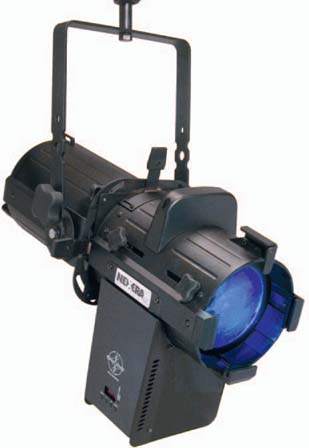
FIGURE 18.28 NexeraLX Profile. (Photograph by Wybron, Inc.)
The Martin Atomic 3000 (Figure 18.31) is the most popular concert touring strobe because it has proven to be both powerful and rugged. It uses a xenon strobe lamp and offers such features as

FIGURE 18.30 Star Strobe. (Photograph by GAM Products.)
variable adjustment of flash rate and intensity (dimmable from 0 to 100%). It is DMX controllable with preprogrammed effects, such as the continuous blinder effect. The Atomic 3000 has an optional color changer attachment with ten gels. The unit has a voltage auto detect from 100 to 260 volts. Divers itronics, Inc., specializes in professional strobe light manufacturing for the entertainment industry; their products ranges from their Finger Strobes for small spaces to the Mark series with three products and lamp options (2000, 3600, and 5000 watts). The company offers nine hyper modes with a single input

FIGURE 18.31 Martin Atomic Colors. (Photograph by Martin Professional.)
trigger and variable rates and intensities. Recently available is an ellipsoidal strobe module that converts a standard ETC Source Four by switching the lamp cap with a xenon lamp cap and using an external light weight strobe module with DMX control for single flash, burst, and variable intensity and rate.
See Figure 18.32 for a list of strobe manufacturers.
[Author's note: There is a chance that the flash rate of a strobe can trigger epileptic seizures in someone viewing the effect.]
MOVING YOKE
This may be a small niche market, but when you need a mirror for a laser show that can be repositioned or you want a conventional luminaire to pan and tilt or may be a mount for a television camera or
projector, Apollo offers a unique side-arm unit (Figure 18.33). This can be a relatively, low-cost solution. In contrast, Omni Sistem and City Theatrical use designs similar to standard moving luminaires.
PROJECTORS
Digital luminaires have started to replace fixed projectors for on-stage projection of live and recorded video images and effects, due to their smaller size, multiple features (particularly pan, tilt, and focus), and control server effects capacity, and road-ability. Spoiled by the digital luminaire's convenient, pan and tilt capability, and powerful options, fixed projectors are used mainly for image magnification (commonly referred to as I-MAG) screens off-stage and some-times on-stage rear projection. Most of these units are very large. Video rental companies build double racks to accommodate two projectors to double the intensity of the images and so one can serve as a back-up. Most require a dedicated technician, and it is a very involved process to determine distance, adjust focus, and align the images of the two projectors to merge perfectly together. Even with variable lens sizes, finding space to place the units with the throw needed for the image size on-stage for rear projection has proven to be logistically difficult. From the front, this kind of projector has to be low enough with regard to screen height to stay within the parameters of keystone

FIGURE 18.33 Right-arm moving yoke. (Photograph by Apollo.)
compensation. The use of projectors for corporate shows, theatrical musicals, and ice shows is more of a possibility.
The leader in the ultra-big, non video group for many years has been PANI Projection and Lighting (Figure 18.34). The company builds a full range of units that show large-format slides, endless loops, and special effects devices with excellent optics for crisp, clear images. However, they weigh in at 100 pounds plus. They use mostly 2500-watt quartz or 6-kW
HMI lamps. The other part of this market is represented by the RDS Scene Machine by GAM Products (Figure 18.35). This unit can be lamped with either a 1000- or 2000-watt quartz source or a 2.5-kW HMI version. This unit is particularly effective as a moving cloud loop, but there are many other stock effects available; it includes a 4 × 5-inch slide tray and automatic changers, as well as effects wheels.
BLACKLIGHTS
Blacklights had their heyday in the 1960s with body painting and psychedelic music, but now they're back. The Wild fire Lighting & and Visual Effects Company has always been a leader in this area with products ranging from fluorescent tubes to powerful long throws (Figure 18.36). Omni System also produces a long-throw ultraviolet unit called the Blackgun. One side note: LEDs can also produce ultraviolet light, but not at a long range. They could be effectively built into costumes or sets.
FLAME EFFECTS
Several devices using colored cloth activated by a fan to simulate flames are safe to use on stage. Le Maitre
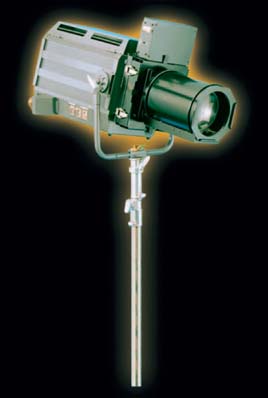
FIGURE 18.35 RDS Scene Machine. (Photograph by GAM Products.)
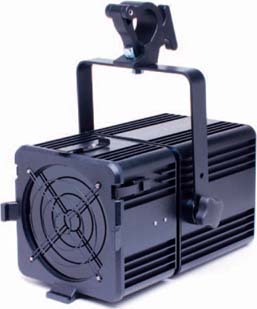
FIGURE 18.36 Long-throw black light. (Photograph by Wildfire Lighting & Visual Effects Company.)
Special Effects (Figure 18.37) and Omni System both make such products. Some live flame designs are safe on stage; however, you should check to see if you need a fire permit to use them in a particular city. GAM Products makes a real flame torch called the GAM TORCH (Figure 18.38).
COLOR MEDIA
The color media used today are much more durable than the material Chip Monck tried to use with the first PAR-64 luminaires. The Brigham Gelatin Company of Randolph, Vermont, was the leading color media in theatre before concerts and remained in business until 1975. And, yes, it truly was a gel formed by pouring the liquid material into trays and cooled. It was thin and couldn't take the heat of the PAR. Joe Tawil, President of GAM Products, has a tremendous collection of color media swatch books going back to the 1950s. He was also in the business of developing color media during the transition to other base materials for color media.

FIGURE 18.38 Real flame torch. (Photograph by GAM Products.)
Around 1950, Cinemoid was developed in England. It was a deep-dyed color on an approximately 5-mil acetate base material. This was a very thick material, and we learned to use a pounce wheel to cut holes in the material to let some heat escape. A pounce wheel is used by tailors to mark material for cutting. While this helped some, there were still issues with primary colors burning out quickly. Roscolux, made in the United States by Rosco Labs, was also on an acetate base but was some what thinner. Lee, another English brand, is surface coated on a polyester base. For many years, Rosco Labs also made Roscolene, which was a gelatin-based product. Joe Tawil became president of Berkey-Colortran, Inc., of Burbank, California, and the company introduced Gelatran in 1969. It was a deep-dyed color in a polyester base. The product was eventually sold to Rosco Labs, which let it die. When Tawil opened his own firm, The Great American Market, he developedGAM in 1983 which was also a deep-dyed color in a polyester base. His contribution was to add transmission curve and wave length information with each color so designers could see how the colors balanced in transmission. Other countries were not asleep at the switch and color media can be found from Japan to Germany. What color media you like is determined purely by individual preferences, and many people mix and match between brands.
Three other ways to produce color in light have to be discussed here. First is the method that Vari* Lite first used to launch the modern moving luminaire industry; a 5600K lamp was the source, and a series of dichroic prisms placed in the luminaire itself provided selective refraction. The beam-separating components offered a veritable rainbow of color choices. Other systems use two color wheels—one in or additive sub-tractive colors (RGB) and the other with secondary or subtractive colors (CYM) plus clear and possibly a diffusion slot—to offer a more limited rainbow of color choices than the dichroic prisms. Another use of dichroic filters is to rotate through a range of colors. At least one color scroller manufacturer goes beyond just placing selected color media on a roll. By combining two strings of color and using two control channels it is possible to overlay different combinations of the strings to get an amazingly wide range of colors. But, it comes at a price. The light must go through two media, and the reduction in intensity may be a problem depending on the application.
All of these methods are far more complicated than can be explained here. Many books are available to discuss the very important topic of the psychology of color. To the concert lighting designer, this is a major factor in the design.
There are about nine manufacturers of color media (filters and glass dichroic). The filters with-stand the high heat that emits from the front of the luminaire; even so, while the more saturated colors may not burn a hole through like the earlier gels used to, they will burn the color out of the center of the media after extended use. The choice of color media is an important one that a designer must make to provide appropriate color options that will serve as the palette during the tour. More often, film and video applications require a full range of correction filters such as daylight, tungsten, arc conversion, and neutral density for light source control, all of which are also produced by the same companies. Even if there is no video carried on a tour, many promoters provide full camera crews and video screens. Normally, they will not come to you to change the way that you light your show. This presents an issue as to whether you and the artist's management want the 20-foot head of the star to look blue or have the correct skin tone. It will probably be up to you to adapt. Color correction filters should become part of your workbox so you are prepared for this situation.
GOBOS AND ACCESSORIES
Although acid-etched metal gobos have been around for a long time, the latest series of ERS units, beginning with the ETC Source Four, has a cool enough primary focal point to allow the use of glass gobos. This has opened a whole new world of color graphics and intricate designs not possible before. Custom-made gobos in either metal or glass are now common. These custom designs are also being made for inclusion in moving luminaires, some by the moving luminaire manufacturer. Rosco Laboratories' gobo wizard software allows the designer to create custom gobos using a computer and then print them on standard transparency film.
[Author's note: These transparency gobos only work as part of manufacturer-designated luminaires due to heat issues, so read the instructions before placing these in a standard luminaire.]
Another way to use gobos to introduce even greater fantasy and more patterns is to use a gobo rotator. Many companies make these in several versions—a single gobo rotating at a set speed or via DMX-512 control for variable speed. The Twin Spin by GAM Products allows two patterns to rotate in opposition to each other, at 2 to 15rpm, controlled via a hand control or dimmer. Rosco makes an indexing feature that allows you to start and stop the gobo's rotation whenever you want. Other variations include the disc tray, loop tray, four-gobo tray, and six-gobo tray by GAM Products.
See Figure 18.39 for a list of gobo, color, and accessory manufacturers.
MAN LIFT
What does this have to do with lighting? A lot. If your crew isn't safe while focusing, then your design won't look the way you want it to for the show. Sure, a lot of the focus work today is accomplished by walking the trusses wearing properly certified fall production gear, but in many instances you must use a ground method. Large A-frame ladders are questionable because of the 6-foot rule … remember that you need to wear fall protection gear if you work over 6 feet off the ground. What avoids this issue is a certified man lift. One of the companies most often found in theatres and arenas is Genie Industries. When used properly, these are very safe for going as high as 36 feet. The Genie IWP Super Series (Figure 18.40) doesn't require outriggers up to 35 feet, 6 inches. Older versions require outriggers and can be difficult to place where needed when other equipment is on stage.
PERSONAL ACCESSORIES
The items below are things that the designer may find useful. Usually, they are one-of-a-kind, unique products that still must be recognized here.

FIGURE 18.40 Genie IWP Super Series. (Photograph by Genie Industries, a Terex Brand.)
Cases
At first look, why would a lighting designer care about road cases? Isn't it the job of the tour equipment supplier to protect their equipment for the tour? The simple answer is an absolute yes; however, you might want to consider having a case built for yourself and your master electrician. First, the master electrician needs to organize all kinds of spare parts, lamps, color media, patterns, plans, and paperwork such as circuit charts, dimmer schedules, etc. The designer normally wants a place to keep plans, paperwork, and … personal items, such as a photo of his dog, cat, girlfriend, boyfriend, baby … you get the idea—fun stuff, and

FIGURE 18.41 Custom roadcase workstation. (Photograph by Nelson Cases.)

FIGURE 18.42 Roadcase manufacturers.
may be some candy for the crew. But, the real reason can be more utilitarian. What about having a place to set up your laptop and printer, to keep printer paper, to serve as a fold-out desk and chair to work on during load-in and focus? Designers need to be organized, and personal road boxes are the solution to this problem. There are lot of great road case manufacturers; Figure 18.41 is a photograph of a customized touring computer work station with table. This is just one example, but all of the companies will be quick to point out that theirs is a custom business—just tell them what you want and they'll create it for you. See Figure 18.42 for a list of road case manufacturers.
Console Cradle
No more setting up your expensive console on rickety banquet tables or stacking road boxes—the EZ-Tilt is a folding console stand that can hold up to 1790 pounds (Figure 18.43).
Color Checker
We use light meters in film and television and often a color meter to determine the Kelvin temperature so we can match different light sources, Sea Changer has a unique concept. The Color Bug is a wireless sensor that determines CIE color values or luminance and sends this information wirelessly to your iPhone or iPod. This device could be extremely helpful for checking that the color temperature is the same between groups of moving luminaires or follow spots.
DMX Lighting Control for iPhone
Synthe FX has developed a program that allows you to wirelessly control, view, and manage intelligent DMX lighting luminaires and consoles on your cell phone! Your iPhone or iPod Touch can use Artistic License's Art-Net protocol over the device's built-in Wi-Fi connection to communicate with other compatible hardware and software on your network. It can be used as a remote focus tool and provides quick channel setup for all of your DMX luminaires. A multi-track, touch-enabled mixer controls with accurate precision, whether you have one luminaire or a hundred. XY grid controls allow you to pan and tilt moving heads. The iPhone can also serve as a DMX data analyzer, as data can be displayed in real time as a touch-scrollable overview of all channels in the input universe. Selecting a specific channel shows the current value, as well as the past 24 seconds of data in graph form.
Launchers
There will always be special performances, such as on New Year's Eve or a national holiday, when the promoter or artist decides that a great ending to the show, short of indoor fireworks, would be to shoot off some confetti or streamers. Some are hand-held, one-time shots; others take CO2 canisters and can be plugged into AC to be used over and over again. The SHOT MAX by CITC (Figure 18.44) is just such a reusable unit that can throw the contents 25 feet.
Cue and Desk Lights
There are many times when a headset intercom just won't cut it, and a visual signal would be better. TMB Products' ProCue comes as a single-unit LED luminaire that uses standard three-pin XLR cable to a 4-, 8-, or 12-way desktop station (Figure 18.45).
The lighting console probably came with built-in desk lights but somehow they never seem to reach over to your notes or script. The normal solution is to get a music stand light, or, worse, someone goes to the hardware store and buys a clip-on light and tapes some blue gel over the face. In both cases, the light probably can't bend down to where you really need it to shine and probably goes more into your eyes. So, do what the console manufacturer probably did—go to Littlite (Figure 18.46) and buy one of some 12 versions of their either incandescent or LED models, all of which come with nice goosenecks so you can place the light wherever you like.

FIGURE 18.45 Cue light system. (Photograph by TMB Products.)

FIGURE 18.46 LED gooseneck reading light. (Photograph by Littlite, Inc.)

